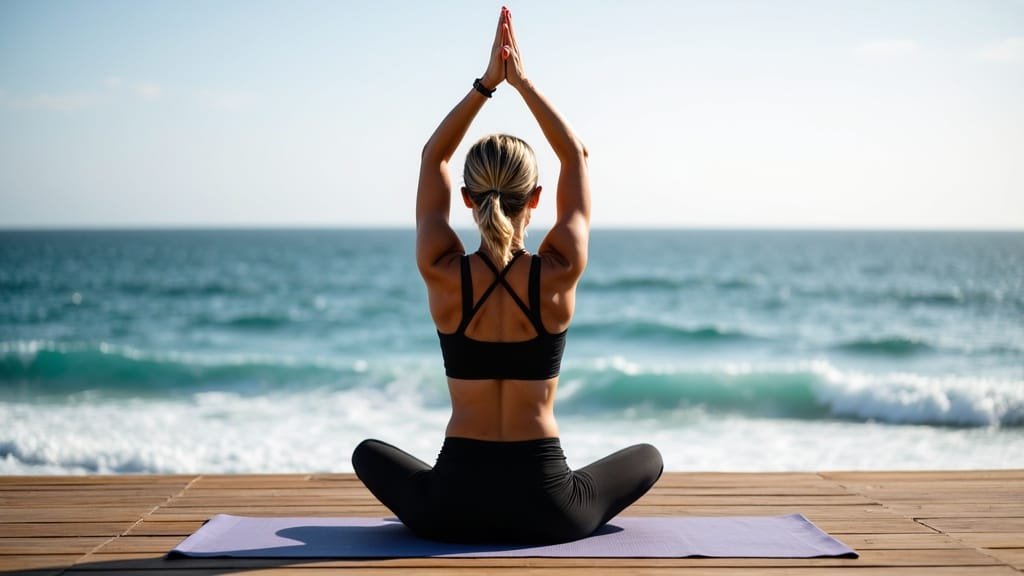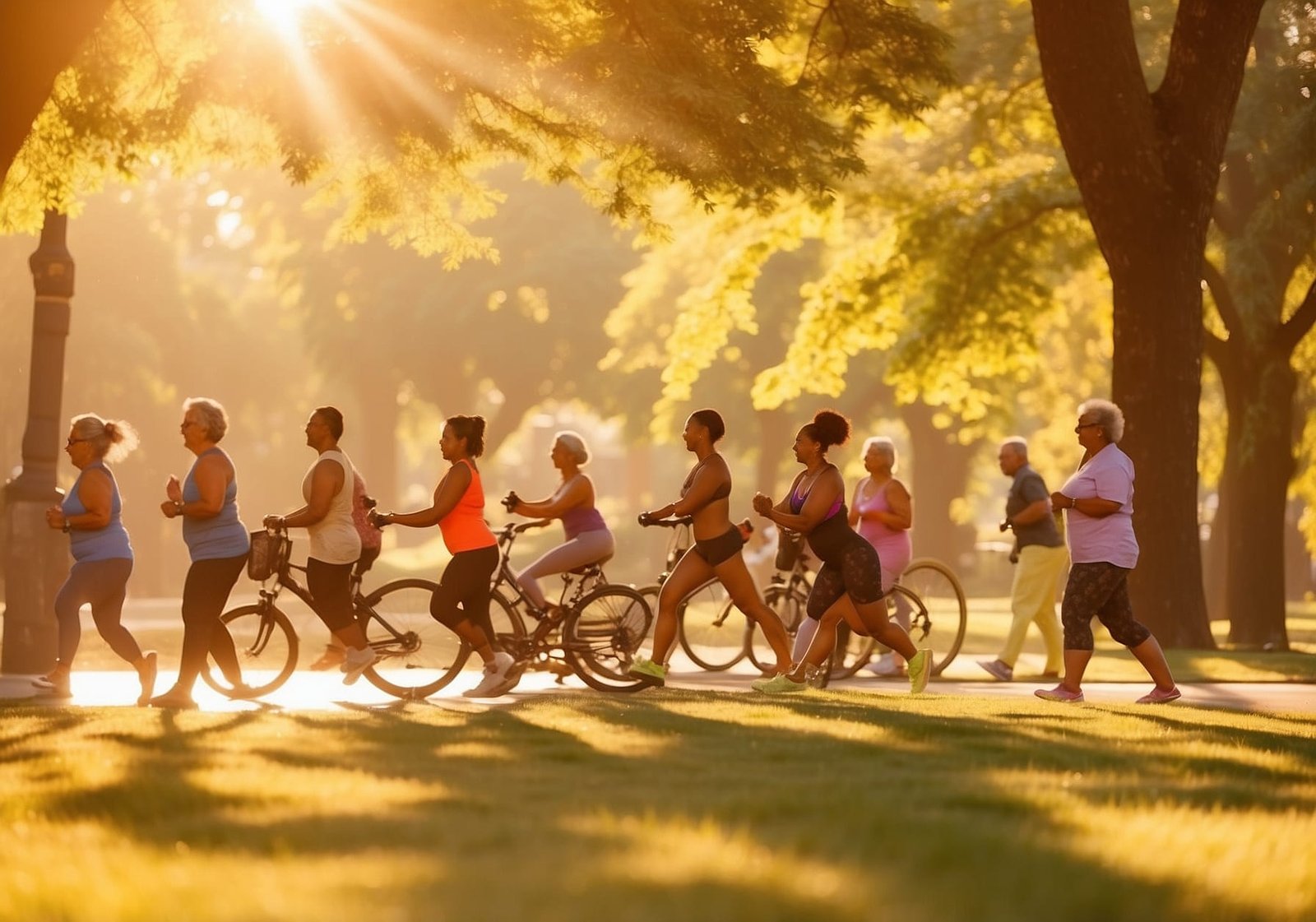In today’s fast-paced world, maintaining a balance between our busy lives and our mental and physical well-being can be tough. The stress from daily commutes, job pressures, family responsibilities, and personal issues can leave us feeling drained and overwhelmed. However, there’s a simple way to achieve daily relaxation and rejuvenation: yoga.
Yoga, an ancient practice that combines physical postures, breathing techniques, and meditation, is a powerful tool for managing stress and promoting overall health. You don’t need extensive training or specialized equipment; just a few minutes daily can make a significant difference. In this article, we’ll explore five easy and accessible yoga poses to incorporate into your daily routine to enhance your physical and mental well-being.
Child Pose (Balasana)
The Child Pose, or Balasana, is an excellent starting point for anyone looking to relax and unwind. This pose is gentle yet effective in stretching the hips, ankles, thighs, and back, making it ideal for relieving back pain and calming stress hormones.
How to Perform Child Pose:
- Start by kneeling on the floor.
- Extend your arms out in front of you, keeping them straight.
- Lower your torso onto your thighs, allowing your forehead to touch the ground.
- Ensure your big toes are touching, and your knees are either together or slightly apart, depending on the tightness of your hips.
- Take at least ten deep, cleansing breaths, focusing on the sensation of your body relaxing onto the ground.
Benefits:
- Gentle Stretching: Child Pose provides a gentle stretch for the hips, ankles, thighs, and back, alleviating tension and discomfort.
- Calming Effects: This pose is known for its calming effects on stress hormones, reducing anxiety and promoting relaxation.
- Restorative: It is a restorative pose that allows your body to rest and recharge, making it great for ending a yoga practice or taking a quick break during the day.
Cat Pose (Marjaryasana) and Cow Pose (Bitilasana)
The Cat and Cow poses are often practiced together in a flowing sequence that warms up the spine, relieves stress, and calms the mind. These poses are simple to learn and can be modified to suit different levels of flexibility.
How to Perform Cat and Cow Poses:
- Start in a tabletop position on your hands and knees. Ensure your wrists are directly under your shoulders and your knees are under your hips.
- Cow Pose (Bitilasana): Inhale and drop your belly towards the floor, lifting your chin and chest. Keep your shoulders relaxed and away from your ears.
- Cat Pose (Marjaryasana): Exhale and pull your stomach towards your spine, rounding your back towards the ceiling. Drop the crown of your head and your tailbone.
- Continue to alternate between these two poses, synchronizing your breath with the movement. Inhale into Cow Pose and exhale into Cat Pose.
Benefits:
- Spinal Flexibility: These poses increase flexibility in the spine, improving posture and reducing back pain.
- Stress Relief: The flowing movement between Cat and Cow poses releases tension and calms the mind.
- Energetic Flow: The combination of these poses creates a gentle warming sensation in the body, promoting the flow of vibrant energy (prana) and releasing stored tension.
Downward Facing Dog (Adho Mukha Svanasana)
Downward Facing Dog, or Adho Mukha Svanasana, is one of the most well-known yoga poses and offers a multitude of benefits for both the body and the mind.
How to Perform Downward Facing Dog:
- Start on all fours.
- Curl your toes under and lift your hips back, straightening your legs as much as possible. Keep your heels slightly lifted if they cannot touch the ground.
- Ensure your hands are firmly planted on the ground, with your fingers spread wide.
- Let your head hang long and loose, avoiding any pressure on your neck.
- Maintain proper alignment by keeping your back flat and transferring the weight from your hands to your feet.
Benefits:
- Physical Stretching: Downward Facing Dog stretches and strengthens the entire body, particularly the hamstrings, calves, and spine.
- Mental Benefits: This pose is excellent for reducing stress and anxiety, promoting a sense of calm and relaxation.
- Restorative Freedom: Regular practice of this pose helps clear adhesions in multiple body areas and expands the energetic body, leading to greater awareness and inner peace.
Standing Forward Bend (Uttanasana)
The Standing Forward Bend, or Uttanasana, is a versatile pose that offers a comprehensive stretch for the entire body while providing numerous health benefits.
How to Perform Standing Forward Bend:
- Start in a standing position with your feet hip-width apart and arms by your sides.
- Inhale and raise your arms overhead.
- Exhale and bend forward at the hips, keeping your spine long and straight as you lower your torso towards the floor.
- Bend your knees slightly if needed to release any tension in your lower back.
- Place your hands on the ground beside your feet or grab opposite elbows to deepen the stretch.
- Hold the pose and take several deep breaths, feeling the stretch through your hamstrings, calves, and spine.
- Inhale to slowly rise back up, one vertebra at a time, with your head coming up last.
Benefits:
- Full-Body Stretch: This pose provides a thorough stretch for your hamstrings, calves, hips, and spine.
- Stress Relief: The inversion of the body in this pose helps increase blood flow to the brain, promoting mental clarity and reducing stress.
- Improves Digestion: The compression of the abdominal area in this pose can stimulate digestive organs and improve digestion.
Practicing these yoga poses daily can be a game-changer for your physical and mental well-being. Not only are they simple to perform and require minimal equipment, but their benefits are also backed by both tradition and modern science. From relieving back pain to reducing stress and promoting overall relaxation, these poses offer a comprehensive approach to maintaining a balanced life. So, roll out your yoga mat, take a few deep breaths, and start your journey towards a healthier and more peaceful you. Remember, consistency is key, and making yoga a part of your daily routine can bring lasting positive changes to your life.
Happy stretching!



